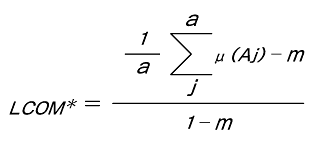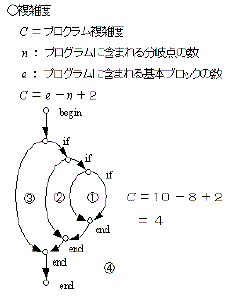ソフトウェアメトリクス解説(005)
This metric is a count of the number of parameters to a method. Methods with a large Number Of Parameters often indicate that classes are missing from the model.
Most methods that have a large Number Of Parameters can be simplified by grouping parameters into a number of related sets and making classes from those sets. It will often be the case that when this is done, those new classes attract behaviour that previously existed (uncomfortably) in other classes. The result will be the formation of semantically rich abstractions that encapsulate a coherent set of operations. This leads to an increase in maintainability.
Labels: software_all




